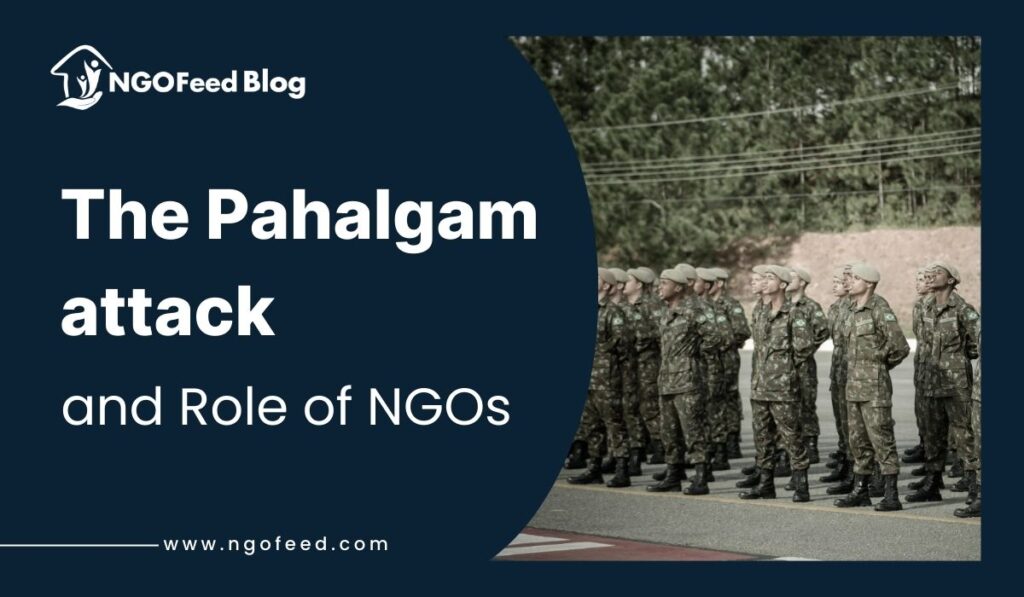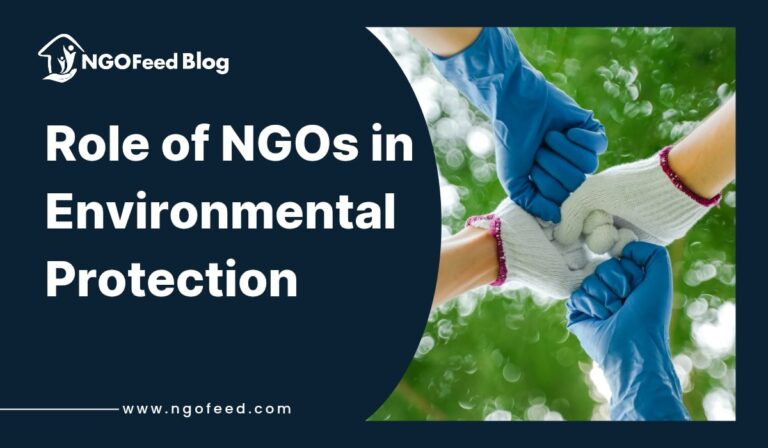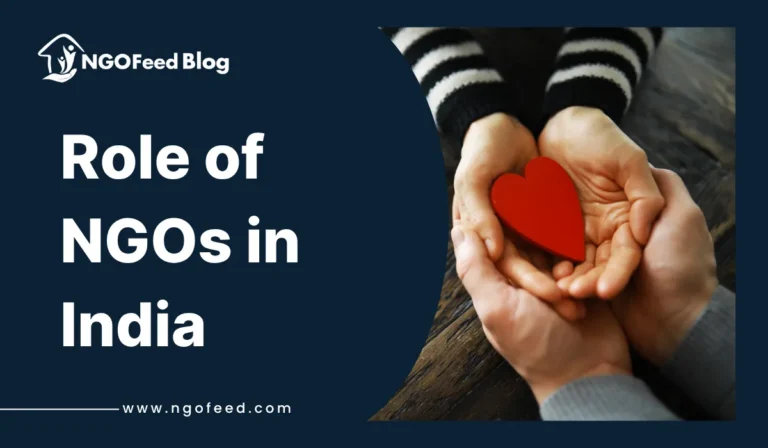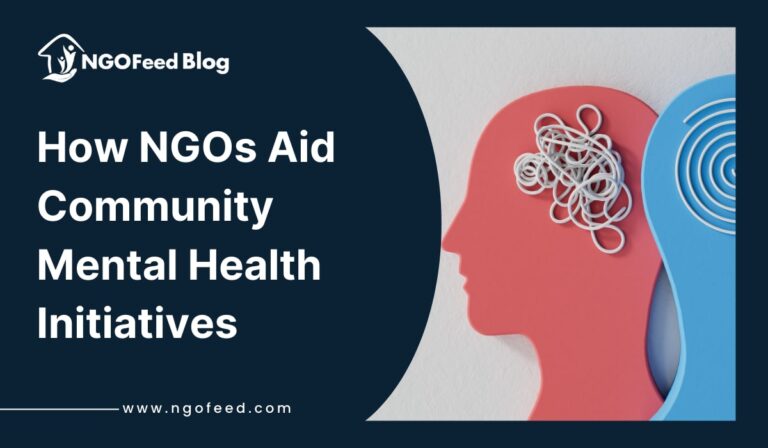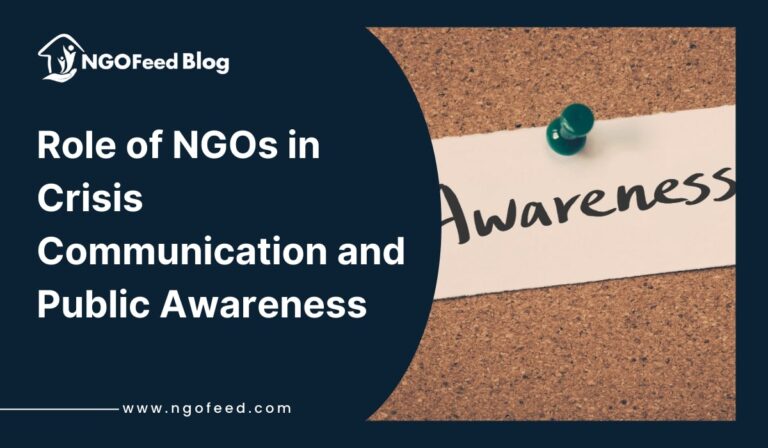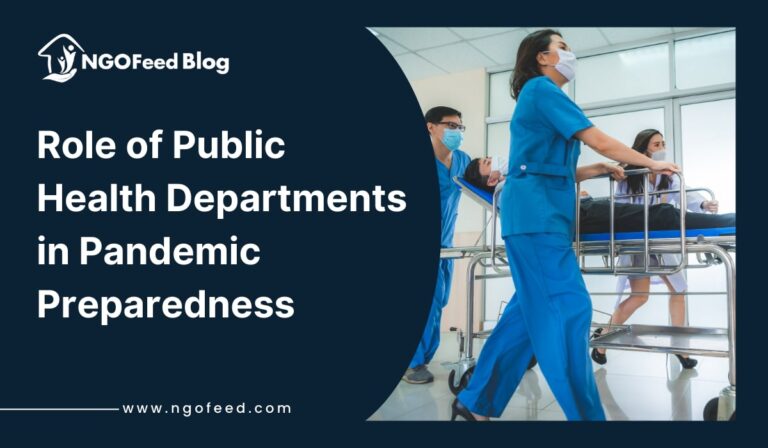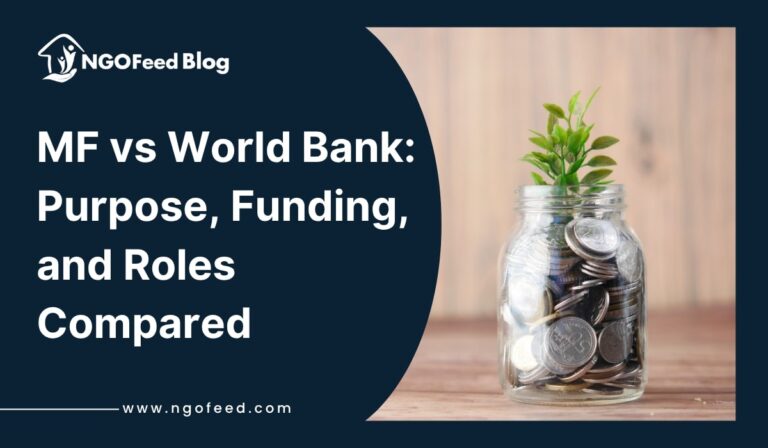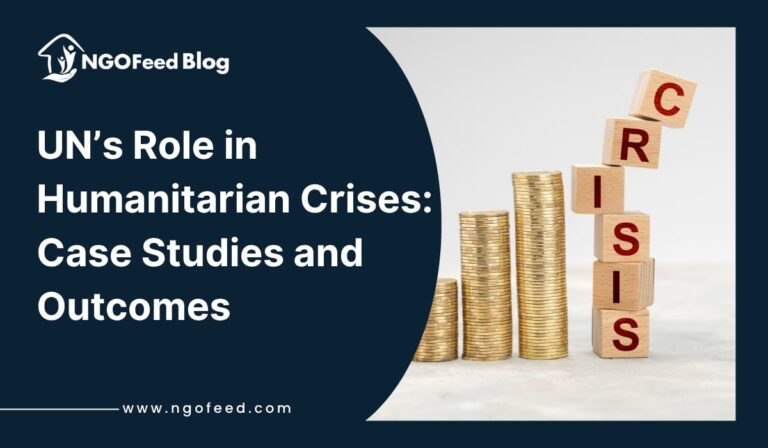Overview of the Pahalgam Attack and Immediate Impact: A brutal attack occurred at Pahalgam, where peaceful landscapes surrounded a tranquil environment, resulting in the deaths of innocent people, while many people suffered injuries. Both tourists and residents became targets in the incident, which unleashed widespread fright and sorrow throughout the area. Peaceful Pahalgam was converted from its usual role as a tourist site to become a scene of horrific devastation.
The Jammu and Kashmir attack provoked extensive feelings of panic throughout the affected area. The emergency response teams faced difficulties managing the huge number of wounded victims at the same time, while numerous families desperately looked for their missing family members. The public infrastructure collapsed under the pressure, while hospitals provided care to numerous injured victims and many people lost both food and shelter and medical services.
Table of Contents
Non-Governmental Organisations (NGOS)played a crucial part during these urgent situations. Government rescue services started their operations, but NGOS in India acted swiftly to handle the humanitarian gaps by supplying first aid help together with psychological support along with emergency items and evacuation support. The quick actions of these NGOS enabled both the stabilisation of the current condition as well as brought collective comfort to victims who had endured the acts of violence.
This research investigates the role of NGOs in Pahalgam attack response activities after the Kashmir attack, while revealing their difficulties and vital support, along with their current assistance for recovery efforts in this tragic setting.
Role of NGOs in Pahalgam Attack – Immediate Response & Relief Efforts
Medical organisations collaborated with shelters to provide victims with both medicalassistance and shelter, along with food and trauma counselling services.
Time proved critical right after terrorists struck Pahalgam. The attack triggered an immediate response from NGOS, who activated their resources to organise teams to bring life-saving services to victims. The immediate medical assistance took priority because survivors needed quick medical attention. The establishment of emergency medical camps operated by NGOS near the affected region enabled them to work jointly with local hospitals for increased doctor and nurse, and paramedic staff support. Emergency medical vehicles had vital supplies onboard while staying operational 24 hours to offer fast casualty recovery and healthcare services.
Shelter was another pressing concern. The disaster caused the displacement of multiple families because of unsafe living conditions and home destruction. The NGOS set up portable shelter facilities where beneficiaries received bedding together with sanitary facilities and fundamental supplies. The shelters provided people with safety and support in addition to housing during the very first crisis period.
Also Read: NGOs Contribution to Myanmar Earthquake on 28th March
The distribution of food started instantly after authorities activated their networks. Survivors received cooked meals and dry ration packages, and drinking water through the implementation of delivery efforts by aid workers and volunteers who supported those who lost their basic needs during the confusion. The healthcare professionals worked to provide proper nutrition for pregnant women, elderly residents and kids, among others who needed specific dietary support.
The attacks produced both deep emotional and psychological distress, which prompted NGOS to provide an immediate response. The implementation of trauma counselling as well as psychological first aid took place during the early response period. One of the key actions taken was delivering individual therapy through professional counsellors who simultaneously conducted group discussions and taught coping skills as part of their work. Established allowable spaces for child play sessions allowed affected youth to both act out uncertainties and share fears while obtaining trauma assistance from such secure conditions.
NGO emergency response efforts demonstrated exceptional speed, which enabled them to preserve lives while providing stability to communities during their most fragile state.
Challenges Faced by NGOs in the Phalagam Attack & Key Contributions
Difficulties on the Ground and Notable NGO Interventions
Operating as an NGO in the post-attack environment of Pahalgam proved problematic to both organisational and operational aspects. The post-attack atmosphere brought dangers of additional attacks, plus military limitations and imposed restrictions that limited the ability to travel. It was difficult to deliver aid swiftly because of the destruction of infrastructure combined with limited remote access. Security measures needed for clearance purposes occasionally created delays for both relief items and assistance teams.
Staff throughout the NGOs and their volunteers faced emotional burnout during their operations. High stress along with dangerous conditions in this operational environment, demanded that workers exhibit extreme resilience while adopting necessary survival techniques. Nonprofits struggled to maintain adequate resources since they lacked sufficient medical materials and psychological staff, along with emergency shelter tools.
Also Read: Role of UNWTO in Tourism
The achievements made by NGOS in this situation merit significant recognition. The attack response saw organisations establish mobile practical facilities together with modular hospitals, which were deployed within the first several hours. The organisation of blood donation drives by health NGOs maintained adequate hospital supplies to care for severely wounded patients. Non-governmental organisations which focus on mental health started providing crisis intervention services through helpline operations accessible to any person who needed help.
The “Community Support Cells” emerged as an important response, which brought together counselling along with medical advice and legal aid, and livelihood support services within a single location. The multi-service facilities provided a path to rapid and detailed healing opportunities for numerous family units.
NGO partners worked closely with local authorities, together with police departments and hospital networks, to implement collaborative efforts that prevented duplicate assistance and delivered help directly to those most at risk. Through their community ties, they processed work at greater speed and with increased sensitivity compared to larger official institutions.
Their actions both reduced current suffering and brought back a sense of dignity and hope to the desperate environment.
Case Studies: Notable NGO Interventions
Saluting Key Organizations and Their Contributions
Following the Pahalgam attack, some NGOs stood out for their superior interventions that had a real and lasting influence on communities hit by the disaster. Their creative strategies, strong community contacts, and unstinting efforts set an example for effective disaster intervention. Here are a few key organizations and their contributions.
1. Kashmir Relief Initiative (KRI)
KRI quickly mobilized medical staff and set up a fully operational emergency health camp within 24 hours of the attack. With volunteer physicians from Srinagar and Anantnag, they treated trauma for more than 200 wounded victims, who otherwise would not have been able to reach hospitals on time. KRI also organized a blood donation campaign through nearby towns, providing a constant stream of crucial blood units to besieged health centers.
Also Read: Role of NGOs in Conflict Resolution
2. Help Foundation
With expertise in psychosocial support, Help Foundation sent trauma counselors and trained psychologists to the area in 48 hours. They established “Safe Spaces for Women and Children,” providing counseling, recreational activities, and trauma therapy workshops. Their art therapy sessions, where children used drawing and storytelling to depict their emotions, proved useful in alleviating psychological distress among child survivors.
3. Borderless Resilience Trust (BRT)
BRT concentrated on delivering livelihood support to those whose employment and businesses were interrupted by the attack. In just three weeks, they implemented a micro-grant program which enabled 150 families to resume small businesses such as retail stalls, handicrafts, and tailoring. They also conducted vocational training courses in skills such as computer literacy, weaving, and carpentry for facilitating long-term income generation.
4. Athwaas Peace Network
Based on its roots in community reconciliation, Athwaas conducted interfaith and inter-community dialogues, bringing together various groups affected by the attack. Their peace circles and community storytelling sessions helped to rebuild trust and cohesion, building a collective narrative of resilience and healing. By engaging local youth leaders, they established platforms for future peacebuilding efforts in the region.
These case studies not only highlight the range of NGO interventions — from health assistance to livelihood recovery and peacebuilding — but also underscore the combined strength of civil society in addressing humanitarian crises. Each organization’s effort was an essential piece of the overall recovery puzzle, illustrating that sustainable recovery is only achievable through multi-faceted, collaborative efforts.
Long-Term Role and Conclusion
Rehabilitation, Peacebuilding, and the Way Forward
Once the initial crisis passed, non-governmental organisations acknowledged that sustaining lives through rebuilding works is an extended process which demands ongoing efforts. The rehabilitation projects established programs to help displaced families, as well as programs that provided both financial survival assistance to those who became unemployed and business owners and continuous psychological therapy to victims of trauma.
The housing programs enabled families either to restore damaged houses or construct replacements. Educational assistance programs were created to offer support for children experiencing effects from the violence, so their education was not interrupted. The programs established vocational training especially for women and young individuals to aid them in rebuilding their financial stability while strengthening community resistance.
Also Read: Role of NGOs in Disaster Relief
Peacebuilding efforts also gained momentum. Non-governmental organisations conducted multiple programs involving faith-based discussions together with youth empowerment workshops and communal gatherings, which strengthened cross-community bonding and understanding. Initiatives aimed at fighting radicalisation entered the scene to stop new waves of hatred from spreading within the community following the attack.
Many non-government organisations continue their work in Pahalgam for multiple months since the attack occurred. Through their steady involvement, the organisations are converting suffering into meaningful causes and adversity into endurance, besides turning terror into optimistic hopes for lasting peace.
The Pahalgam attack response actions of NGOs demonstrate the transformative capabilities that result from civil society groups mobilising compassion through organised structures. NGOs accompany government operations with human values to ensure complete community participation in the pathway between suffering and restoration despite the necessity of state security agencies. The recent attacks serve as evidence that organisations working together generate hope despite adversity to lead society toward rebuilding from tragic events.

